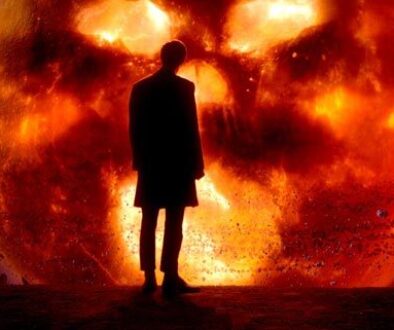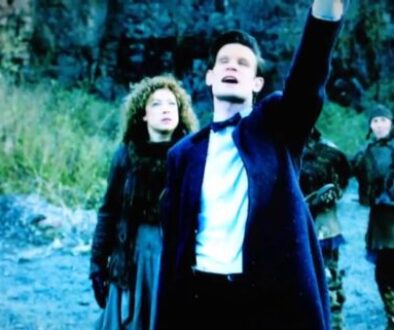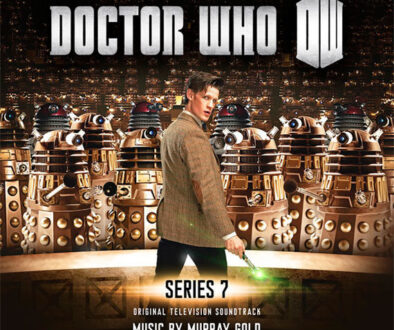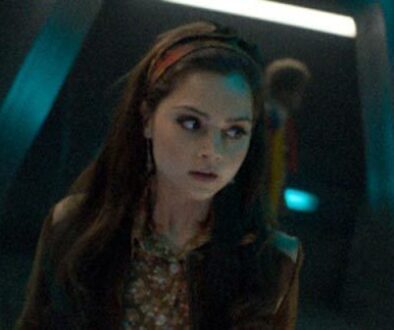The Rings of Akhaten Review

Clint Hassell gives his verdict on Neil Cross’ divisive episode.
This review is vastly different than the one I initially planned to write. In short, I liked “The Rings of Akhaten,” finding it similar to “The End of the World” (my absolute favorite episode of Doctor Who – and, I claim, the best, for reasons I won’t discuss here) because of its rich, thought-provoking insight into an alien civilization. However, upon first viewing, the episode seemed so choked by plot holes and a reliance on a twist ending that the inherent potential is squandered. I figured that my review would praise the high points of the episode’s first act, followed by a discussion as to how the severe problems that ruin the ending could have been avoided.
However, as I watched the episode for the fifth time, stopping every few seconds to note discussion points, I began to notice the real trick of the episode, and how it purposely misleads the audience, thus masking a dark backstory. While not a flawless episode, “The Rings of Akhaten” is densely packed with secrets that reveal themselves with repeated viewings.
A large problem with the episode is that the seemingly-singular threat, alternately referred to in Act I as “Grandfather” and “a god,” is actually two separate beasts – “Grandfather,” the Mummy, and the “god” inside the sun. Further, the episode further confounds by taking advantage of the audience’s foreknowledge of Doctor Who – namely that the program most often reveals plot points to viewers by having the Doctor reiterate facts to the companion. We’ve come to trust the Doctor as nigh-omniscient, a story device made believable due to the Doctor’s advanced age and extensive experience. However, in “The Rings of Akhaten,” the Doctor is incorrect in his knowledge of the alien religion, thus misinforming the audience of key plot points that can only be fully reconstructed at episode’s end.
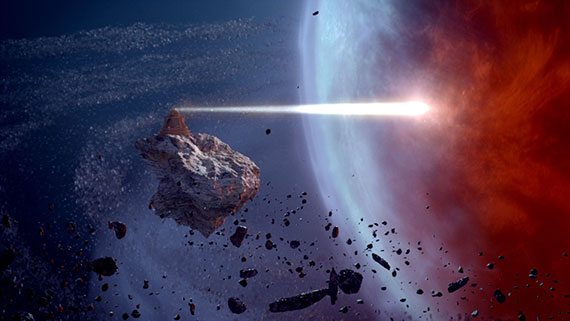
To wit, the fantastically overwrought set-up of “The Rings of Akhaten”:
Around an alien sun, lies a ring of small planetoids, seven of which are inhabited by a wide variety of scientifically-advanced alien forms. These aliens have mastered teleportation technologies, have created artificial gravity and an atmosphere around asteroids not large enough to maintain either, and have built both an open coliseum and a pyramid-shaped temple to facilitate their worship of the sentient sun at the center of their solar system. The races of the Seven Worlds are psychometric – capable of sensing, via touch, the emotional energies attached to a physical object – allowing them to create a large market that utilizes a system of barter based on sentimental objects. The “sun god” that the aliens worship is also psychometric and feeds on the inherent energy of objects offered as sacrifice; once every thousand years, this seemingly includes the sacrifice of a young girl, the Queen of Years, made “valuable” by being filled with the shared cultural knowledge of the Seven Worlds.
To ensure that the citizens of the Seven Worlds continue to offer items as sacrifice, the sun god terrorizes the aliens via a monstrous Mummy, referred to as “Grandfather.” The aliens believe that “Grandfather” – and thus the sun god he serves – will remain asleep as long as a specific lullaby is sung repeatedly. In reality, the Mummy is merely hibernating, feeding only once every thousand years, the lullaby being largely ceremonial. It is the Mummy that feeds on the Queen of Years, as he breaks from his 1,000-year slumber, and not the sun god.*
*Note that Merry is not dissolved into shining particles but is levitated to the Mummy’s chamber, inside the pyramid. Further, while the Doctor refers to the Queen of Years as valuable because she is innocent, he is mistaken; while she does have infinitely high psychometric value due to her ceremonial position as the living repository of shared cultural knowledge, to feed on Merry, who is young and has many years of potential life ahead of her, would be to consume as much future energy as that contained in Clara’s leaf, which proves fatal to the sun god. The sun god would prefer an elderly Queen of Years – still full of “stories,” but not full of potential energy. Conversely, the Mummy obviously wants to feast on something young, because it chooses to capture and eat Merry, yet ignores the older chorister which was right in front of it. Clearly, she is fodder for the Mummy.
Not only is the Queen of Years raised to know her fate, she is also shadowed by the Vigil – a group of henchmen whose job it is to feed the Queen of Years to Grandfather. Kinda a sick society, no?

Despite the underlying darkness of this system’s barbaric religious practices, there are signs that the society is willing to break free from the sentient sun’s millions-of-years-long reign. A secret tunnel is constructed inside the pyramid temple, with the key to its location hidden within a ceremonial song. Despite the fact that the entire civilization thinks that the sacrifice of the Queen of Years will appease their sun god – a belief which is validated when she suddenly reappears, and the sun literally begins to look angry – Merry is not mobbed by thousands of terrified aliens. Apparently, tired of sacrificing one girl every 1,000 years (and having to give up their sentimental possessions), the people are complacent to let Clara and the Doctor defeat their sun god.
. . . which is kinda a problem. The sun god may have been evil and terrorizing, but it still functioned as a life-sustaining sun for the Seven Worlds, who are now without light and heat, and probably really cross with Merry for messing up the millions-of-years-old status quo. Good thing they’ve got that asteroid modified to maintain its own gravity and atmosphere. Gonna need that now, with no sun, huh? No wonder they gave Clara’s ring back to the Doctor – they just wanted the duo to leave before they “saved” anyone else!
The narrative of “The Rings of Akhaten” is complex, with many plot points, motives, and histories only indirectly evidenced. While the episode isn’t quite plot hole-free, for once, my thoughts are more focused on the deeper issues raised for the audience’s consideration. (For example, how do two aliens agree upon a value for an item of sentimental value? We accept that a five dollar bill is worth $5, because it says “five” on the bill. The use of non-standardized units of currency opens up questions about groupthink and shared cultural beliefs that I find fascinating.)

Second only to the dense script is the episode’s sumptuous visuals. The actual rings of Akhaten were breathtaking, and may even eclipse the shot of the pre-formed Earth as seen by Ten and Donna in “The Runaway Bride.” For once, the Doctor capitalizes on his promise to show his companion “all of time and space.” Not to be outdone, the market scene is just as fantastic, utilizing practical effects to realize a menagerie of new aliens. I was surprised to not see at least one familiar species, even if as a cameo, when Clara was separated from the Doctor. How awesome would it have been if Clara had bumped into a Raxacoricofallapatorian? The Slitheen dealt in black market goods, so their presence would have made sense in the market setting.
Having the episode open with The Specials’ “Ghost Town” is a masterstroke. Not only does the song’s intro sound “Egyptian” – thus referencing the pyramid of Akhaten and the “mummy” inside – the track has a sultry, sensual beat, perfect for underscoring the budding romance between Clara’s mom and dad. Further, the song is from 1981, which establishes the teasers time period without resorting to an on-screen caption. Additionally, the track’s title references both Clara’s late mother and Clara herself, who states at episode’s end that she “won’t stand in for a ghost.”
Speaking of, the episode emphasizes Ellie Oswald’s statement that she “will always come and find” her daughter, “even on the moon . . . every single time.” Could this be telegraphing the end of Clara’s storyline? Will this be her reward for traveling with the Doctor – to be reunited with her mother?
While we’re speculating about family reunions, is it coincidence that, while visiting an alien world whose inhabitants refer to their god as “grandfather,” the Doctor mentions bring his granddaughter to that same planet? Is Moffat trying to clear up the myth that Susan Foreman was not the Doctor’s actual granddaughter, or further confusing the issue? Could this be leading up to the rumored appearance of Carole Ann Ford in the 50th anniversary special?



